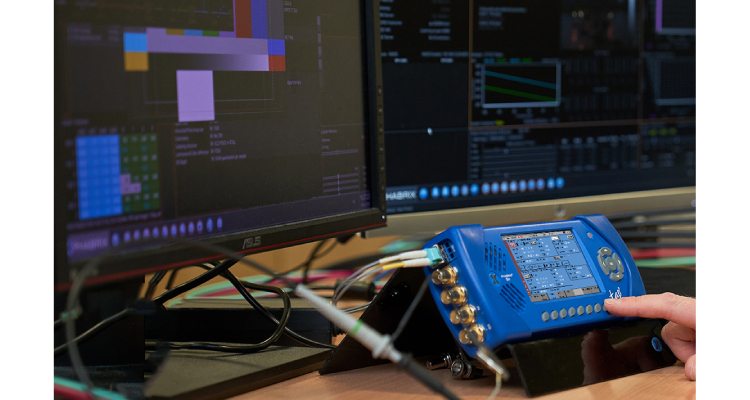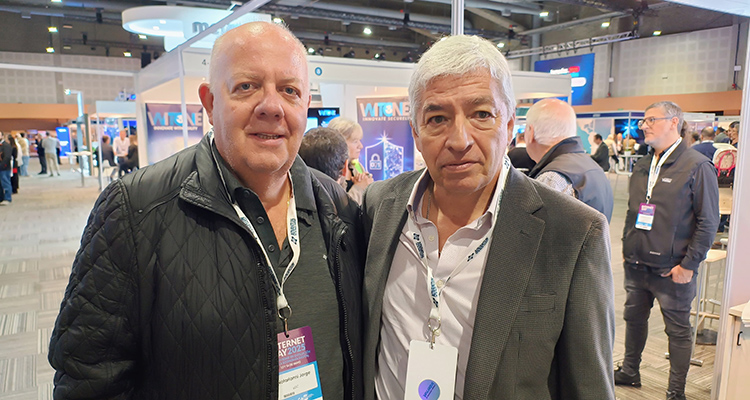
With a busy year of major tournaments in prospect, PHABRIX COO Martin Mulligan explains the benefits of selecting handheld test & measurement solutions for demanding sports productions
Sports broadcasting has always been a trailblazer for the use of new technologies. From advanced camera systems to 4K and HDR, sports has often been the first area of television to adopt new ways of working. But with so much live production involved, and I/O counts rising significantly in recent years, broadcasters’ expectations of test & measurement (T&M) technology have inevitably become more exacting.
As a leading provider of T&M solutions, PHABRIX has developed an extensive range of products able to cope with the full scope of formats and workflows. However, it is the PHABRIX handheld products in the Sx series that have resonated most strongly with sports broadcast teams, who are often tasked with verifying a huge number of sources within stadiums, OB trucks or fly-packs.
For instance, imagine the set-up for a football/soccer match taking place at a stadium during a major tournament. These days you will have 30 cameras at least, including cameras at pitch-level, on helicopters, Spidercams, etc. The turnarounds can be very tight, and if you are working on an event like a football/soccer match you also have a fixed deadline, i.e. kick-off, to work towards. So, if there does turn out to be problems once all the sources have been connected – like signal attenuation due to long cable lengths or the presence of electrical noise causing jitter– the broadcast engineer can be faced with a really time-critical situation in which to resolve them.
This sort of scenario is precisely why broadcast engineers have developed a real affinity with PHABRIX handheld instruments, including products such as the SxE. This truly portable device offers 3G/HD/SD generation, analysis and monitoring, with advanced SDI physical layer analysis (Eye & Jitter) making it especially conducive to live production.
The quality of cables and connectors has an effect on the quality of the SDI signal, and if the signal is degraded or damaged then errors will occur. The SxE allows the signal to be analyzed, to ensure everything is remaining within SMPTE specified limits. Moreover, with an SxE, engineers can move around quickly and identify the cause of the video, audio, or ancillary data problems – then fix them. Plenty of people have told me these devices have been real lifesavers during time-critical live-event productions. The ability to fix one key issue more than justifies the price of the unit.

Live production variations
The fact that PHABRIX products are very easy-to-use also complements the more variable nature of sports production environments nowadays. Thanks to recent advances in remote production, which mean that more of the key tasks are taking place at the broadcast center, a lot of sporting events – especially those in the lower tiers – are now being attended to with smaller trucks and crews. If you’ve got a production where a single engineer has to do everything, then it’s paramount that the T&M systems they select are intuitive, easy-to-use and have all the tools; that’s consistently been the feedback for our Sx products.
But there are also many other advantages for sports productions, including creative decisions related to graphics. Graphics are typically generated in an RGB computer world, whereas the video is coming from a YCbCr environment. In HDR, when you overlay those two items, the graphics tend to be too luminous because they’ve come from a different color space. This means there is a need to achieve a creative balance between the two elements and create the desired ‘look’ for the end-client.
Sports production will continue to evolve, but what we can say with certainty is that T&M requirements will go on increasing. IP is definitely on the rise worldwide, but I think that hybrid IP/SDI environments will continue to be popular for a long time, not least as people are very comfortable with SDI and it’s cost-effective. Once again, the PHABRIX range provides a great solution for hybrid needs, starting with the handheld Sx TAG, which supports IP (2022-6/2110), 3G/HD/SD-SDI, optical SDI, HDMI as well as analogue signals, all the way through the Qx range for 12G-SDI/25GE IP/HDR/WCG solutions.
I would also like to highlight the capabilities of our QxP portable waveform monitor. Essentially a more portable version of the very popular QxL product, the QxP supports hybrid working with both 12G SDI and 25G IP professional monitoring ‘to go’. A 3U multitouch LCD screen, with button and mouse control, and the ability to use main power, DC or industry-standard camera batteries ensure the QxP is just as useful on-location at the sports stadium as it is back at the broadcast center.
Meanwhile, broadcasters and their production partners will be providing greater quantities of content to different platforms, while also responding to the call for more photorealistic environments and immersive audio. This is something that we are keeping a close eye on as we work to ensure our T&M offer is always one step ‘ahead of the curve’.
With a busy year of demanding sports events ahead in which nothing can be left to chance, our portable T&M solutions can remove one major source of concern from the equation for broadcast engineers everywhere.
For more information on the PHABRIX range of handheld instruments, please visit https://leaderphabrix.com/products/handheld/




